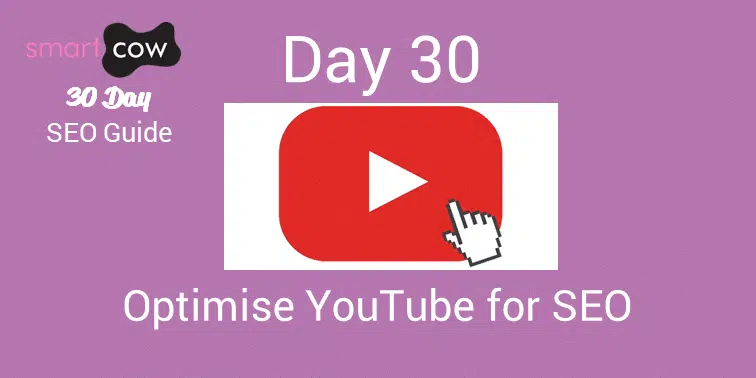Before we get too deep into how to optimise your YouTube videos, let us tell you the signals that search engine’s such as Google look for when ranking your videos:
• Title tag information
• Audience retention
• Keywords in description tag
• Tags
• Video length
• Number of subscribers after watching
• Comments
• Likes and dislikes
Now you have a brief understanding of what’s involved, we can continue to tell you five ways you can leverage these signals to get more traffic to your videos and website!
1. Write long video descriptions!
When it comes to search engines ranking content, and especially videos, it’s important to remember that they can’t watch or listen to your video (yet).
This means that the only way they can understand what is happening in the video is through text. The more YouTube knows about your video, the more confidently it can rank it for your target keywords and phrases.
Out of all the text surrounding your video, YouTube uses keywords in the description to rank you for long tail keywords.
The best way, in our experience, to show search engines what is going on in your video is to write a summary of the main points in your video in the description, remembering to include all those keywords you want to rank for!
2. Optimise around ‘Video Keywords’
Ranking in YouTube is great, but ranking in YouTube AND Google is even better!
Only certain keywords get an inherent edge in the Search Engine Results Pages (SERPs) when it comes to Google ranking YouTube videos.
These keywords are called ‘Video Keywords’ because they tend to have video results on Google’s front page. For example, if a user is searching for cute cats, they’re most likely wanting to watch a video of cats being cute, instead of reading an article on this.
Before deciding a keyword for your video, check to see if there are video results on the first page, if there are then you should DEFINITELY use that keyword in your video description!
3. Get more video views from Social Media
Social networking sites such as Twitter, Facebook and LinkedIn are perfect places to share your YouTube videos to increase the number of views on your videos!
But it’s not just the number of views that help you rank highly in YouTube and Google, it’s the quality of the views that really matters. This means that YouTube will value a video viewed 100 times from start to finish over a video viewed 1000 times but only for a quarter of the video.
To receive better quality views, target online communities with people that will be interested in the video. Here’s a few tip on how:
Facebook:
- Post your video to public groups related to your video’s topic.
- Use hashtags to filter your content into streams only related to that tag.
- Build an audience of users interested in what you offer.
Twitter:
- Create lists of users and share this content with them.
- Use hashtags like with Facebook.
LinkedIn:
- Find a question in a group and post your video if you think it will help answer the question.
4. Encourage subscribing and liking
A lot of weight has been given to user experience signals by YouTube’s algorithm as it doesn’t use backlinks. If people enjoy watching your videos, the algorithm will look at this as a strong signal that the content is worth ranking higher.
The main ways YouTube determines user experience in a video is from subscribing and liking. When a user likes your video enough to subscribe after watching it, it sends a strong signal to YouTube that you have some killer content, and will rank your video higher depending on the number of subscriptions. Likes are much less important, but still count.
To increase these user experience signals, you can simply ask the viewers to like and subscribe at the end of the video by giving a clear call-to-action.
5. Create keyword-rich playlists
Organising your YouTube videos is a great way to inform the algorithms about the content in your videos.
One of the easiest ways to get more YouTube traffic is to sort your videos into playlists. A keyword rich playlist not only tells the algorithms what is happening in your videos, but it also helps users find content they’re looking for. Having keyword rich descriptions for all the videos in a playlist is the best way to rank higher in YouTube and like we mentioned earlier, more text-based content = more views.
